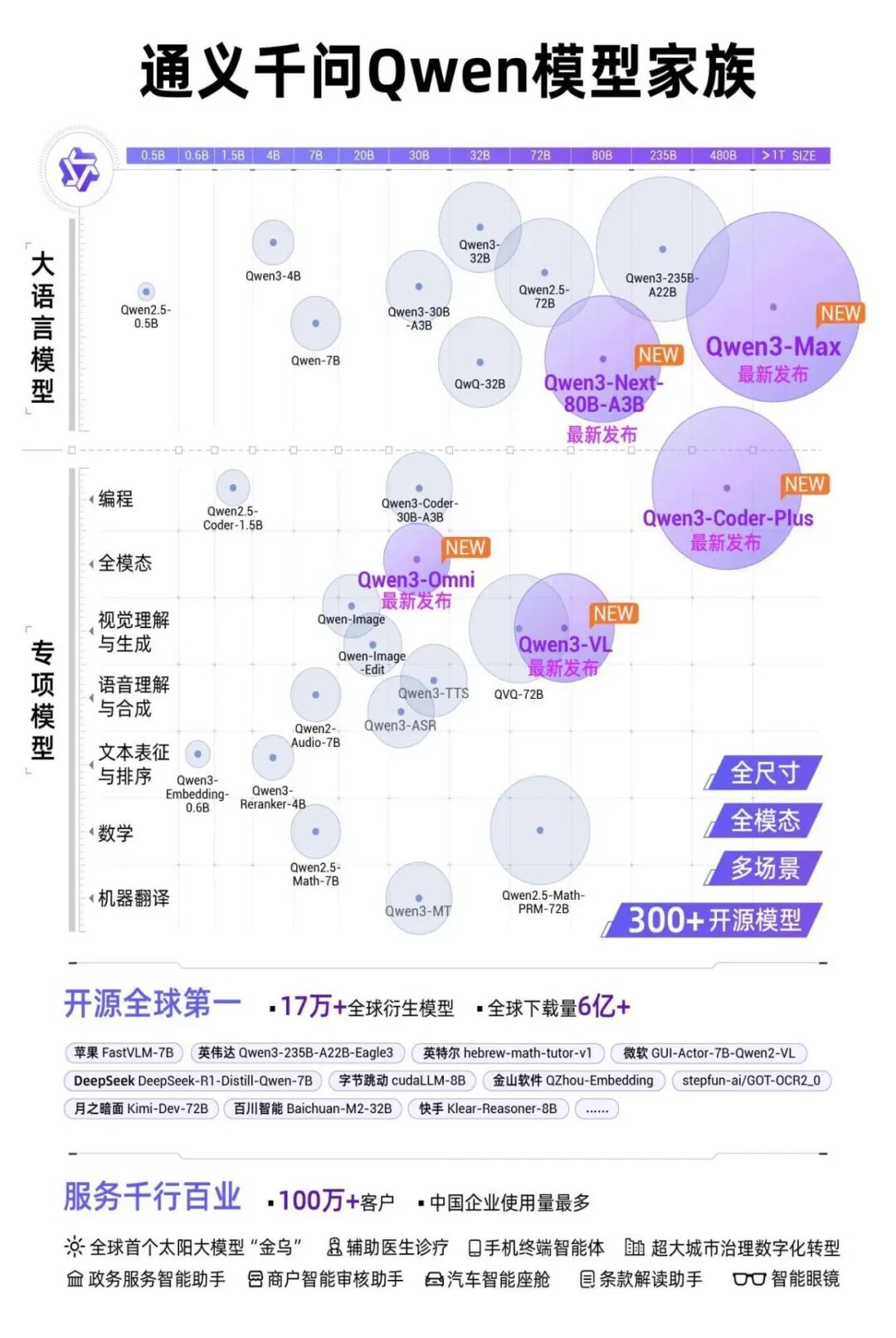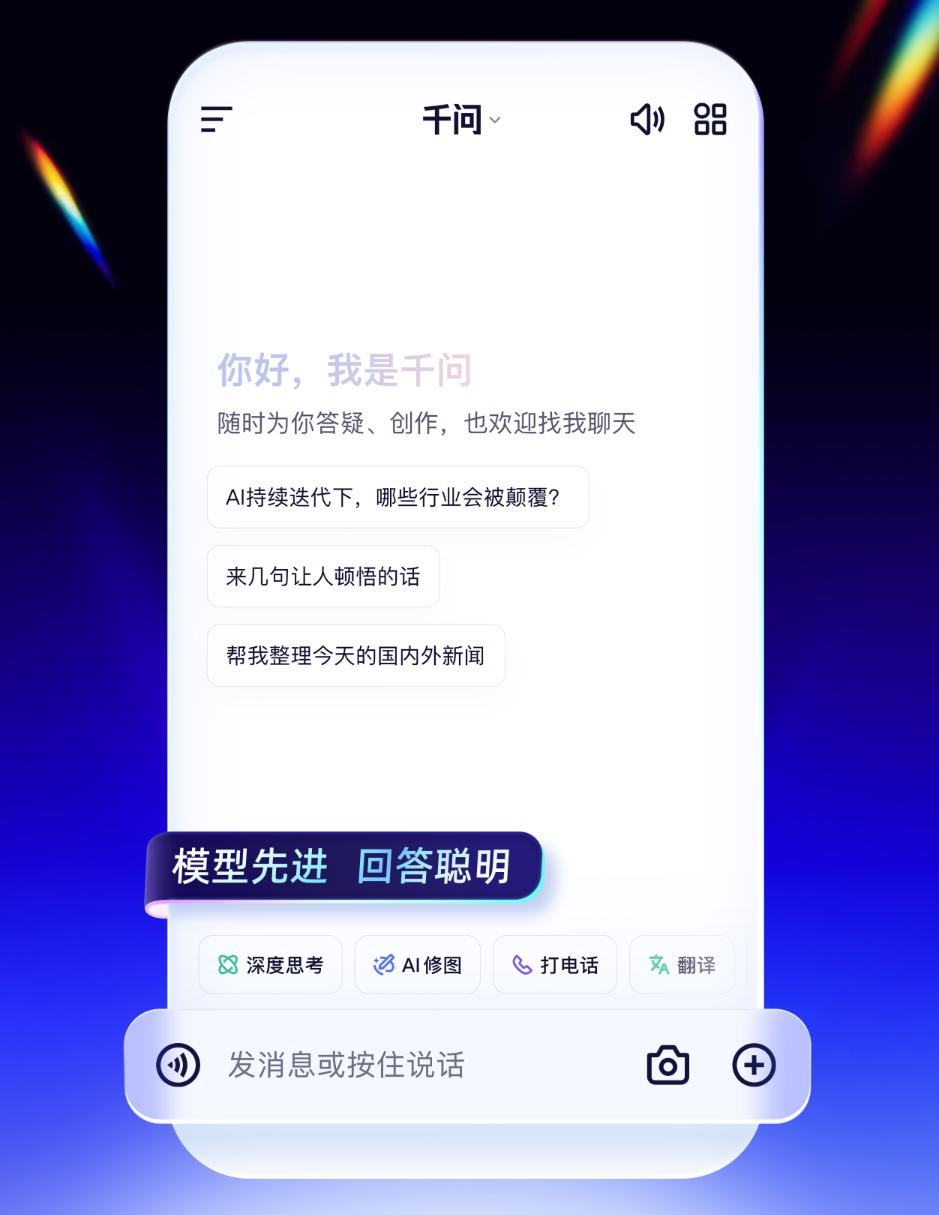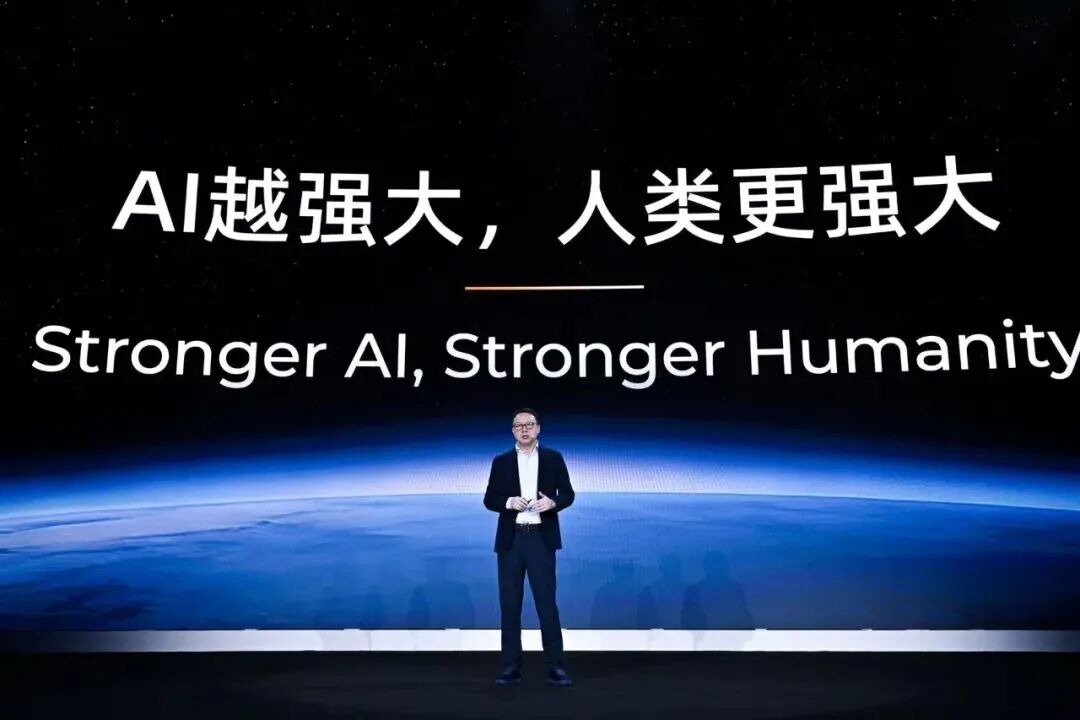title":"How Alibaba's AI, QianWen, Executes a Flawless Orbital Maneuver with Its 'Three-Stage Rocket' Strategy?
![]() 11/25 2025
11/25 2025
![]() 380
380
In the latter half of 2025, China witnessed fierce competition in the realm of consumer-facing AI applications.
Data reveals that the aggregate user base of mainstream AI applications has soared past the 1 billion mark. Yet, amidst the dual pressures of technological homogenization and ecosystem rivalry, most players find themselves stuck in a cycle of sameness, with the market eagerly awaiting a disruptor that can redefine the game.
In November, Alibaba's QianWen APP emerged as this long-awaited catalyst. Without extensive pre-launch marketing, it catapulted into the top three of the App Store's free overall rankings within three days of its debut. In just a week of public testing, downloads surged past 10 million.

Dubbed 'QianWen Speed' by the industry, this growth trajectory not only eclipsed the records of renowned domestic and international AI applications like ChatGPT, Sora, and DeepSeek but also sent ripples across the capital market—Alibaba's stock price surged immediately post-data disclosure, with intraday gains exceeding 5%. This direct market endorsement underscored expectations for the product and its underlying strategy.
However, the apparent 'speed' is often rooted in profound 'slowness'. The meteoric rise of QianWen is, in essence, the culmination of years of 'steady and deliberate' efforts. Since 2023, Alibaba has been quietly cultivating influence in the global open-source community through its Qwen series of models, which have now amassed over 600 million downloads. These models have become a 'universal currency' for developers, earning public recognition from international industry titans such as NVIDIA CEO Jensen Huang and Airbnb CEO Brian Chesky.
This accumulation of potential, achieved away from the public eye, mirrors the meticulous assembly of rocket stages and fuel loading before a launch.
Thus, to comprehend QianWen's success, one must look beyond the APP's spectacular takeoff. Like observing a rocket launch, what is visible is the moment of liftoff, but behind it lies the precise coordination and orderly operation of a multi-stage propulsion system. QianWen's rapid growth is not driven by a single factor but is the natural outcome of a systematic engineering endeavor.
Next, 'New Perspective' will dissect the technical logic and strategic blueprint behind the 'QianWen APP' through the lens of a 'three-stage rocket'.
01. Ignition: The 'Cold Launch' of the Open-Source Community
The explosive rise of the QianWen APP in the mainstream market is often perceived as a sudden 'breakthrough'. However, focusing solely on the 10 million downloads in the first week of public testing overlooks a crucial fact: successful application explosions often complete their core potential accumulation away from the public eye.
QianWen's rapid ascent did not commence with flashy marketing to ordinary users but was rooted in Alibaba's quiet yet resolute 'cold launch' targeting the global developer community over the past few years. The core propulsion system of this launch is its long-term investment in and comprehensive open-sourcing of the Qwen series of models.

Amidst the AI industry's erstwhile pursuit of closed systems and exclusive models, Alibaba opted to systematically open-source its technological achievements. This decision was grounded in a clear-eyed judgment of how AI technologies should be implemented: to truly make an impact, large models must not remain confined to laboratory parameter tables but must become directly usable and practical 'tools' for developers.
Much like how a rocket launch requires a stable propellant supply, the Qwen series serves as a 'propellant factory' for the global developer community, continuously delivering a full stack of technologies ranging from foundational models to industry-adapted versions. This enables developers with diverse needs to swiftly access high-quality technological fuel.
As of now, the global cumulative downloads of the Qwen series have surpassed 600 million, with over 100,000 model variants derived. This not only surpasses former open-source benchmarks like Llama and DeepSeek but also cements its position in multiple authoritative technical evaluations. The flagship model, Qwen3-Max, ranks among the top three globally in performance, even outperforming international competitors like GPT5 and Claude Opus 4.
Its value swiftly gained recognition from industry leaders. NVIDIA CEO Jensen Huang publicly stated that Qwen dominates a significant share of the global open-source model market, while Airbnb CEO Brian Chesky admitted that his company relies heavily on Qwen, finding it 'faster and better' than OpenAI's models in certain scenarios.

Overseas social media even witnessed a wave of 'Qwen Panic', which essentially reflects the industry's intuitive response to the diffusion of this technological influence and the competitive edge of Chinese open-source models. When a model from China becomes the 'preferred tool' in the global developer community, its technological maturity and ecological appeal need no further explanation.
In a sense, this international recognition echoes the global attention previously garnered by DeepSeek. It signifies that China's AI industry is transitioning from isolated technological breakthroughs by individual companies to a systemic rise of the entire ecosystem, offering a viable path from 'technological catch-up' to 'application leadership'.
Of course, the significance of this 'cold launch' extends beyond the diffusion of technological influence.
The value of the open-source community lies not just in free technology distribution but also in building technological 'credibility' through actual usage and feedback-driven iteration by developers. Many developers who used the Qwen models also conducted secondary development based on their specific scenarios, inadvertently accumulating a 'reliable' reputation for the Qwen series across various fields.
Thus, when the QianWen APP entered public testing, developers who had long followed Qwen became its earliest 'seed users'. Not only were they willing to try it themselves, but they also shared their experiences in technical communities. This spontaneous, trust-based propagation proved far more persuasive than any advertisement—perfectly explaining why the app quickly reached a broad user base upon launch.
At this juncture, the mission of the 'open-source propulsion system' was temporarily complete. When the data of 10 million downloads ignited market attention, the Qwen 'rocket stage' had already propelled QianWen to a sufficient altitude, clearing the largest obstacle in transitioning from 'technological validation' to 'market trust'. The next leg of the journey would require new propulsion to navigate the more complex and competitive atmosphere within the Earth's atmosphere.
This brings us to the second stage of the 'QianWen Rocket'—ecological collaboration, which is tasked with this challenge.
02. Thrust: 'In-Atmosphere Acceleration' Through Ecological Collaboration
After breaking through the initial growth bottleneck, QianWen's challenge shifted from mere technological validation to converting technological potential into sustained user value.
At this stage, relying solely on model performance is insufficient to form a differentiated advantage. Much like how air resistance rapidly depletes a rocket's initial velocity, homogenized competition is diluting the uniqueness of various AI applications, while users' demands for the practical value of tools have become increasingly clear.
QianWen's core strength at this step lies in Alibaba's years of accumulated ecological collaboration capabilities.
Unlike most AI applications still pursuing longer context windows and more human-like conversations, QianWen's design philosophy has transcended mere conversational interaction frameworks from the outset, aiming for a scenario-based approach to solving practical problems. This 'problem-solving' positioning stems from its deep integration with various services within Alibaba's economic ecosystem.
According to Alibaba's strategic plan, QianWen will explore system-level integration with apps like Taobao, Amap, Alipay, and Fliggy at the architectural level. This integration will go beyond simple API calls, involving product-level reconstruction based on business logic.
This complementary relationship will deepen as QianWen integrates more deeply with Alibaba's ecological businesses, continuously expanding its reachable scenarios and capabilities. From initial functions like shopping consultations and navigation planning, its capabilities will extend to broader areas such as hotel bookings, ticket purchases, and utility payments. This expansion is not linear; each new service integration can multiply QianWen's overall value.

When viewing Alibaba's ecosystem, outsiders often simplify it as 'having many businesses'—e-commerce, maps, local services—and assume that adding these functions to QianWen suffices. However, the value of an ecosystem lies not in 'stacking' but in 'collaboration'. Much like a rocket's propulsion system, it is not about multiple engines exerting force independently but about synchronized output and mutual complementarity to form sustained and stable thrust.
What QianWen can tap into is not just the 'surface functions' of these businesses but the capability modules accumulated over years behind them, such as Fliggy's supply chain bargaining power, Amap's real-time traffic data processing capabilities, and Alipay's secure payment system—none of which can be built overnight.
Perhaps in the near future, when a user expresses the need to 'take their child to Shanghai Disneyland for the weekend,' QianWen will comprehend this complex intent and coordinate Fliggy to book tickets and accommodations, recommend family-friendly hotels based on the child's age, plan a route avoiding congestion using Amap's real-time traffic data, and finally complete Alipay payments directly within the conversation—all without leaving the QianWen interface.
From an industry perspective, this emerging capability reflects an important trend: the competition among AI applications is shifting from technical parameters to ecological value. As observed in the industry, in a highly connected business environment, isolated competition strategies can no longer adapt to future development. Huawei has built a full-scenario interconnection through its HarmonyOS, while Garmin has evolved from a GPS product company into an international leader in smart wearables across multiple fields. Successful companies are transitioning from 'single-point competition' to 'ecological collaboration'.
Of course, this ecological strategy is not without challenges. Balancing the interest demands of various business units, ensuring data flow while protecting user privacy, and maintaining consistent service quality are all issues QianWen must address during its ecological expansion.
However, for now, Alibaba's rich business layout provides a uniquely fertile ground for development. QianWen, growing in this environment, will evidently evolve faster than competitors relying solely on technological iteration.
03. Orbital Transfer: Heading Toward the 'Agent Planet'
If the first two stages were about achieving a 'successful launch,' the third stage must answer whether it can 'fly far and accurately'—that is, how to transition from a phenomenal AI APP into the core orbit of the AI Agent era, becoming an indispensable 'operating system-level entry point' in users' digital lives.
From an industry evolution perspective, during the early mobile internet era, smartphones were the core entry points, with various apps vying for positions on users' screens. In the AI era, the entry logic has changed: users no longer satisfy with switching between multiple tools but need a 'hub' capable of autonomously understanding demands, coordinating resources, and completing complex tasks—this is the core value of AI Agents.
Future competition will no longer be about the strength of individual functions but about who can build such a 'digital life operating system,' allowing most user needs to be resolved within a single ecosystem. From this perspective, QianWen's current path aligns precisely with the core logic of the Agent era.
The Qwen series models accumulated during the open-source phase provide QianWen with the foundational capabilities required for an Agent, enabling it to understand complex instructions, coordinate across scenarios, and continuously iterate and optimize. Meanwhile, ecological collaboration supplies the Agent with 'landing scenarios.' Without the support of real services like e-commerce, maps, and local life, even the most powerful Agent would remain an 'empty brain with computational power,' unable to truly solve user problems.
QianWen's uniqueness lies in its integration of these two elements: its 'brain' is a top-tier model validated by the open-source market, while its 'limbs' are the well-established service chains within Alibaba's ecosystem. This 'brain-and-limbs' configuration is the most critical trait of an AI Agent. In contrast, many competitors either possess a technological foundation but lack scenario implementation or have a single scenario without strong autonomous coordination capabilities, making it difficult to truly achieve an Agent transition.
More notably, QianWen's transition does not veer toward 'technological showmanship' but remains firmly anchored at the intersection of 'lofty aspirations' and 'everyday life'. The concept of AI Agents may sound grand, as if it were a 'distant star' pursued by tech companies, leading some firms to become obsessed with parameters and complex functions while forgetting that the ultimate value of technology lies in serving people.

As previously noted, Alibaba's true genius resides in its ability to anchor what might appear to be an abstract and high-minded technological ambition within the practical realm of 'getting things done.' Its objective is not to forge an all-knowing, conversational 'divine entity,' but rather a 'butler' adept at managing daily tasks, such as those related to travel and consumption. This strategic positioning deftly sidesteps the 'airiness' or lack of substance that is often a hallmark of AI products.
The essence of technology's worth is not found in its lofty aspirations but in its closeness to real-world needs.
The realm of 'everyday life,' which may seem mundane, is precisely where the capabilities of Agent come to the fore. As users become accustomed to the convenience of 'accomplishing tasks with a single sentence,' QianWen will transition from being a mere optional tool to becoming an indispensable 'infrastructure' in the digital landscape of their lives.
This 'from daily life to daily life' trajectory renders QianWen's Agent transition less abrupt and more resilient (stable), thereby better aligning with the authentic expectations of mass users for AI.
Now, casting our gaze back over QianWen's entire 'launch' process—from its long-term open-source strategy (layout), to its fostering of ecological collaboration, to its precise Agent transition—these three stages of propulsion are intricately intertwined, with no step being superfluous. Its meteoric rise may appear sudden, but it is, in fact, the inevitable outcome of the harmonious interplay among technological potential, ecological resources, and the prevailing trends of the times.
While the road ahead remains lengthy—posing challenges such as how to streamline ecological collaboration to prevent experience fragmentation stemming from business integration; how to continually enhance Agent capabilities, elevating from 'getting things done' to 'getting things done exceptionally well'; how to uphold service stability amidst rapid expansion and safeguard user trust...
The exploration undertaken by QianWen unquestionably offers a pragmatic and exemplary blueprint for the development of AI applications in China. It seamlessly integrates technological innovation with industrial implementation, while striking a delicate balance between technological ideals and user needs. In this regard, its value extends far beyond the mere success or failure at the product level.
*The featured image and illustrations within the text are sourced from the internet.








